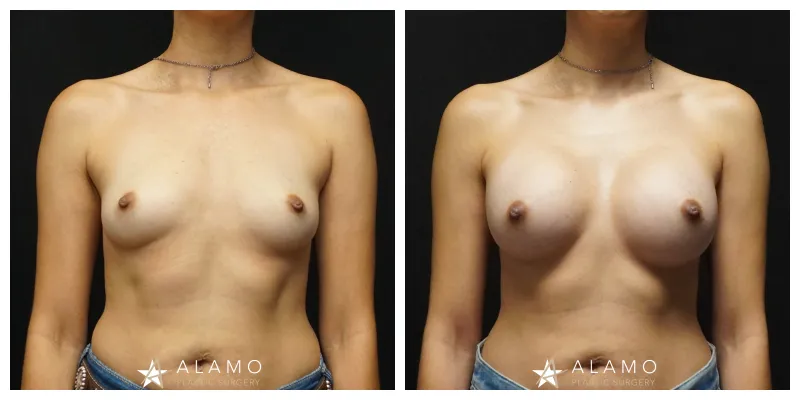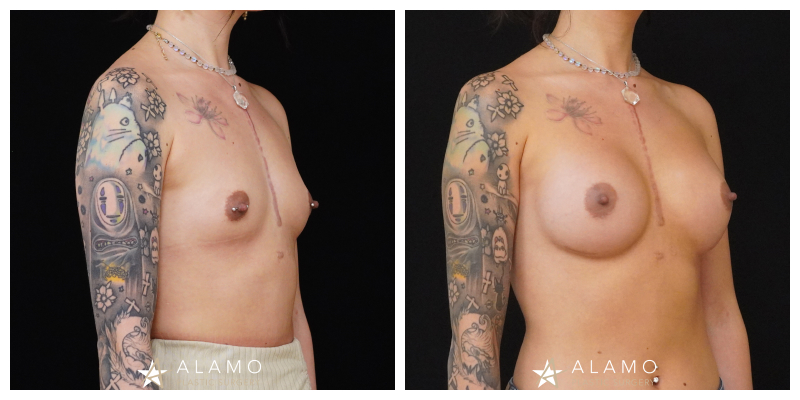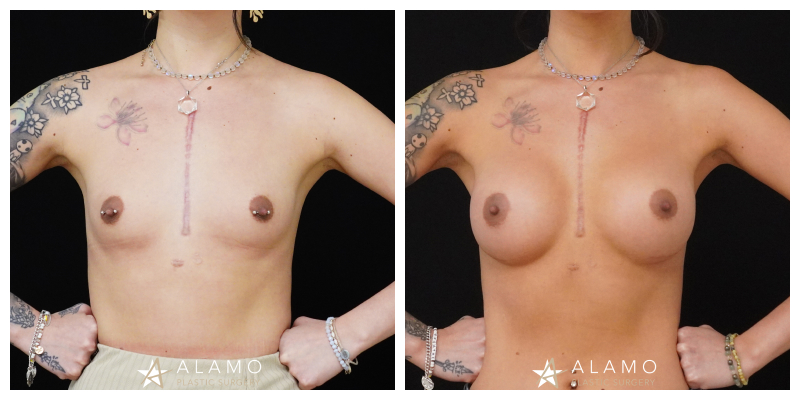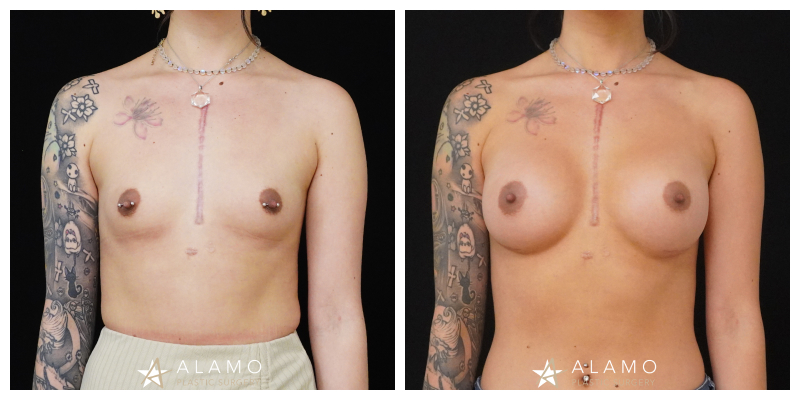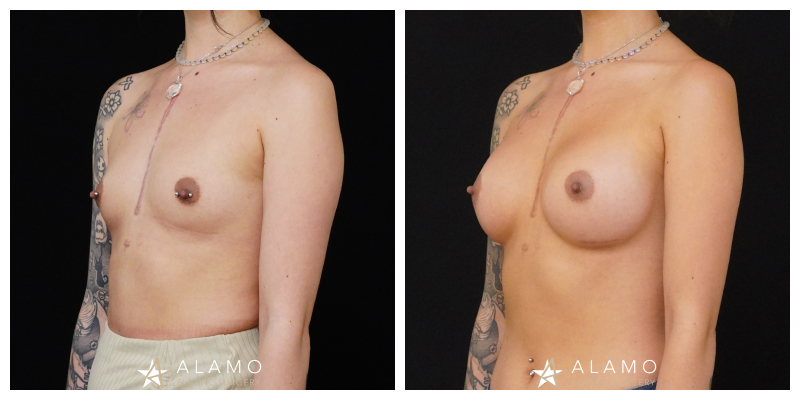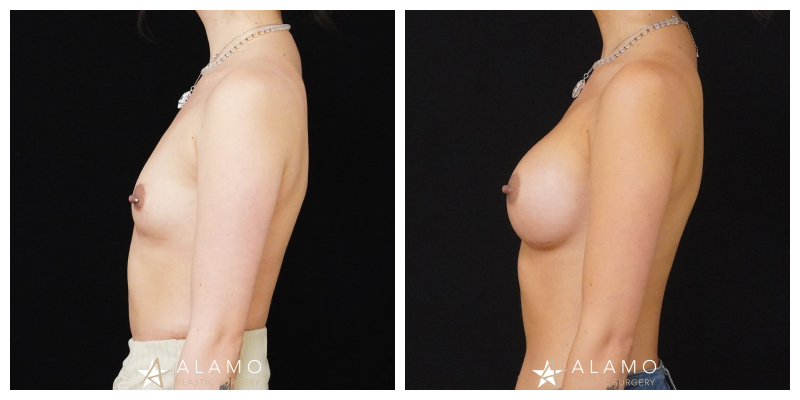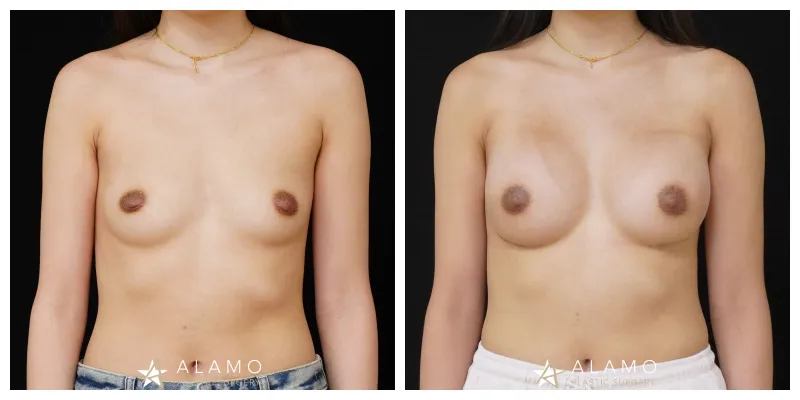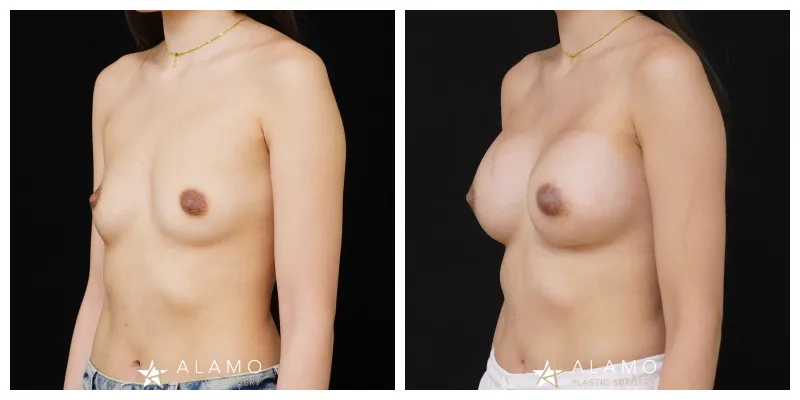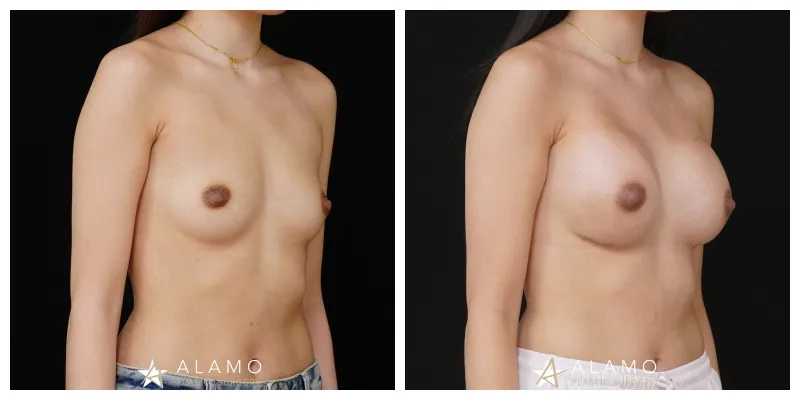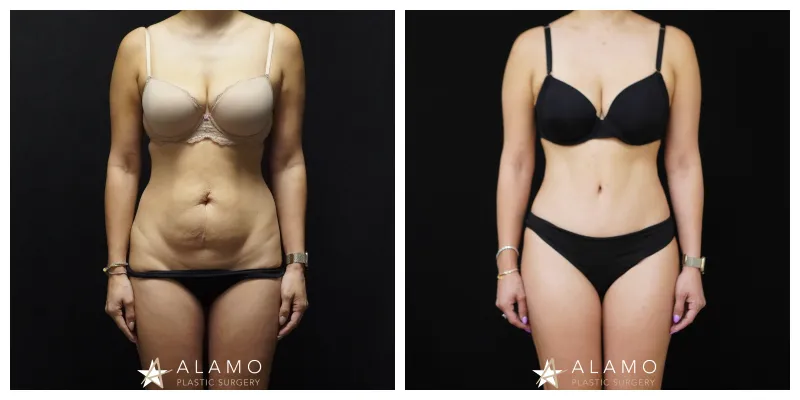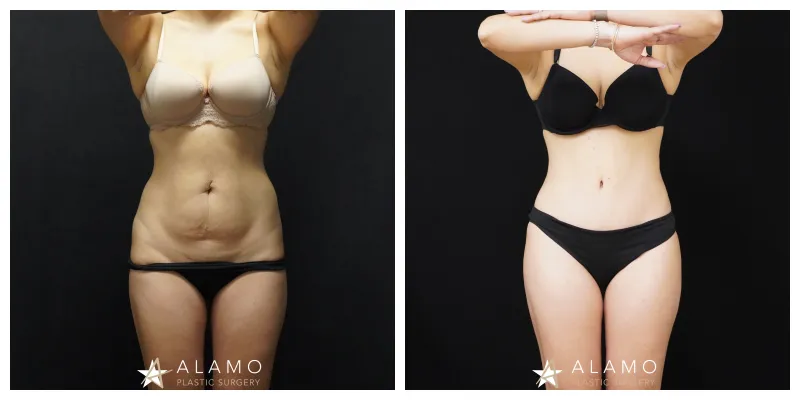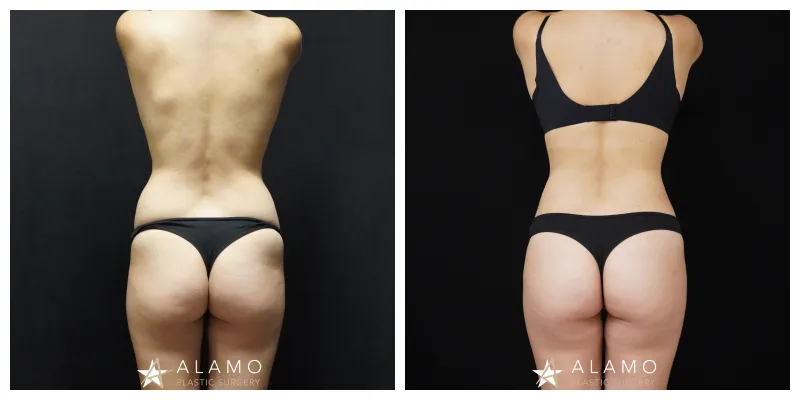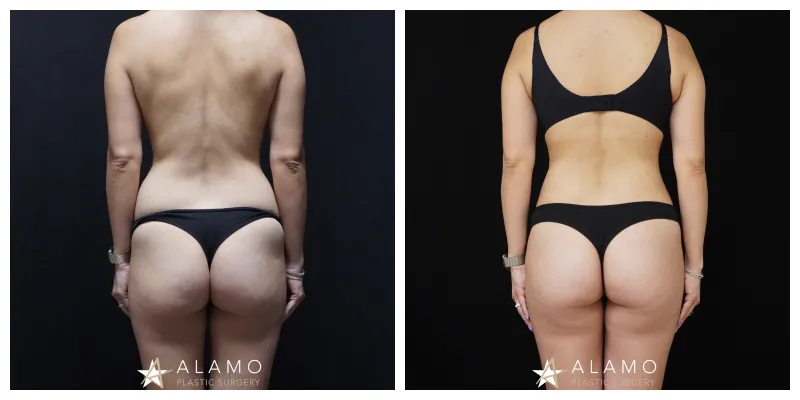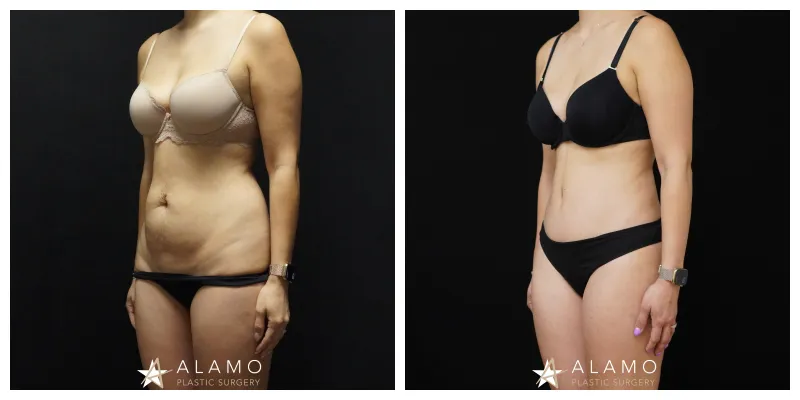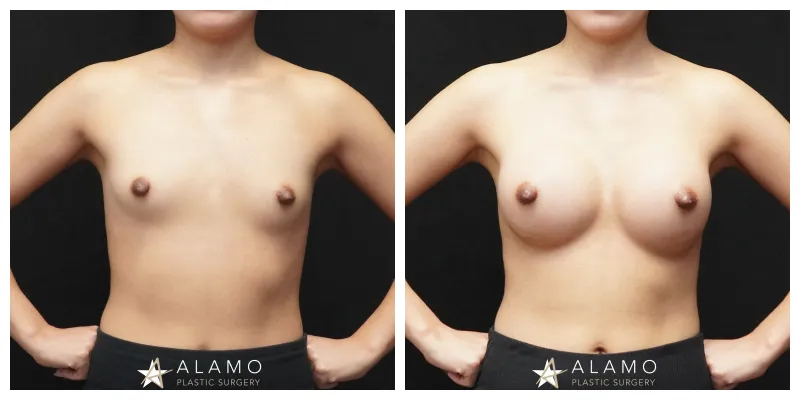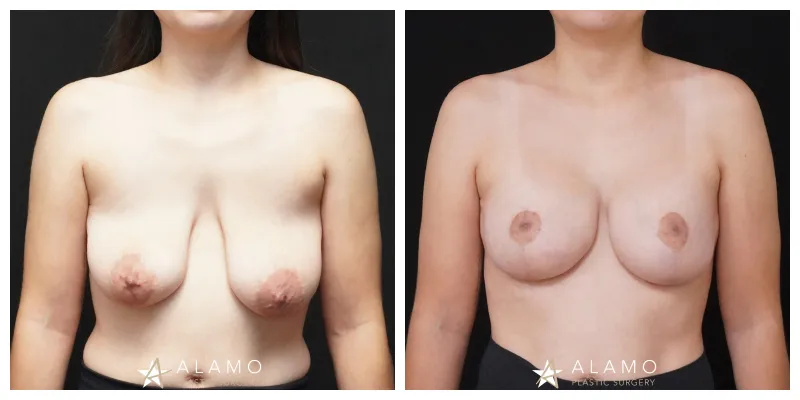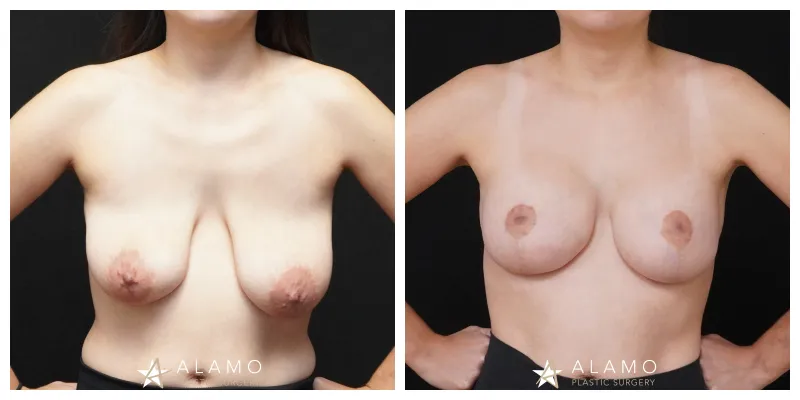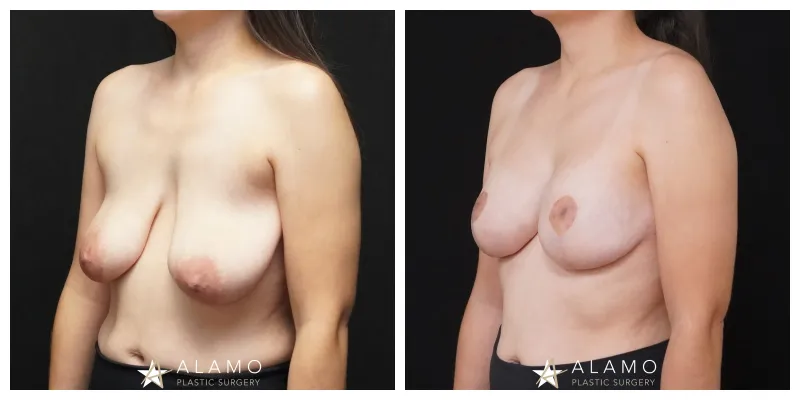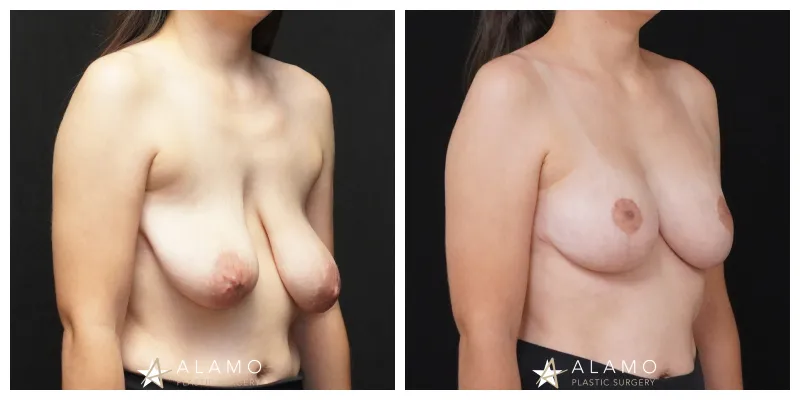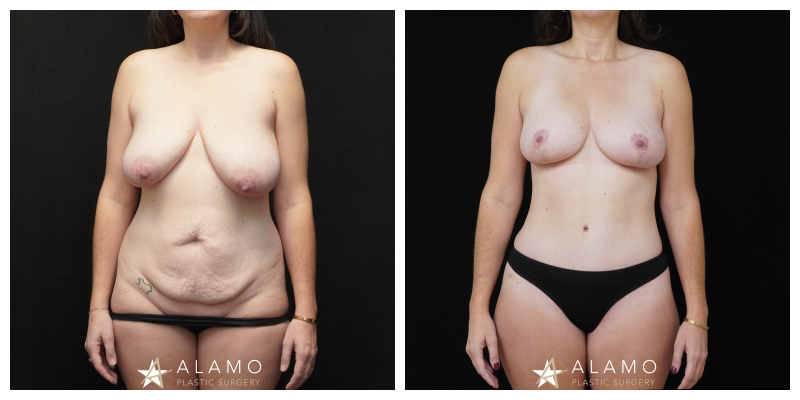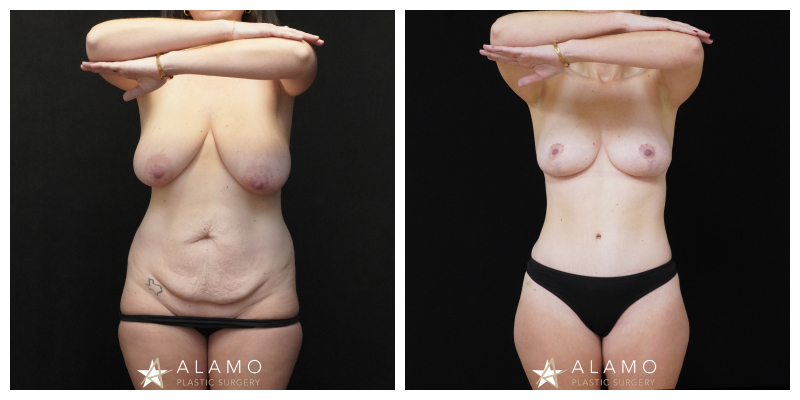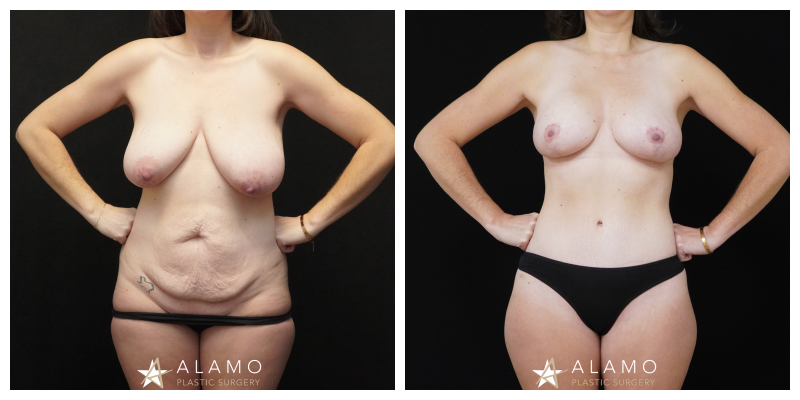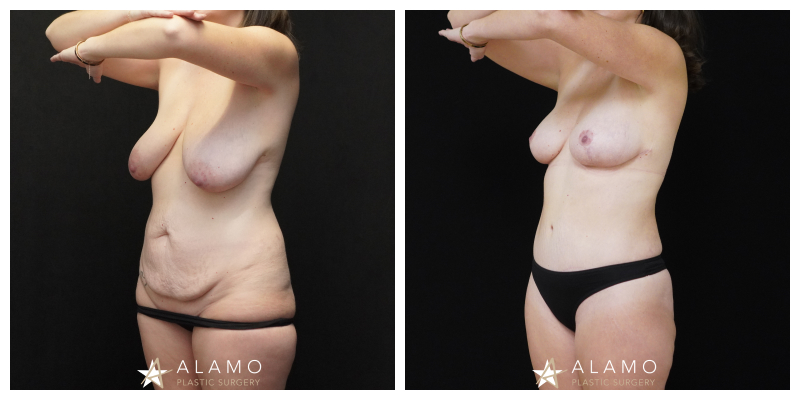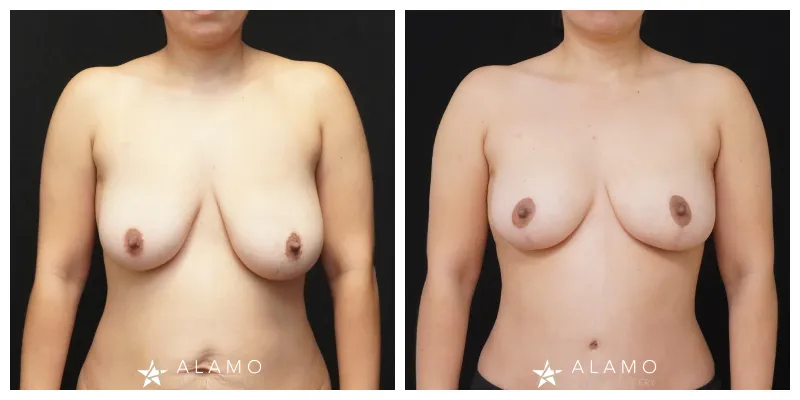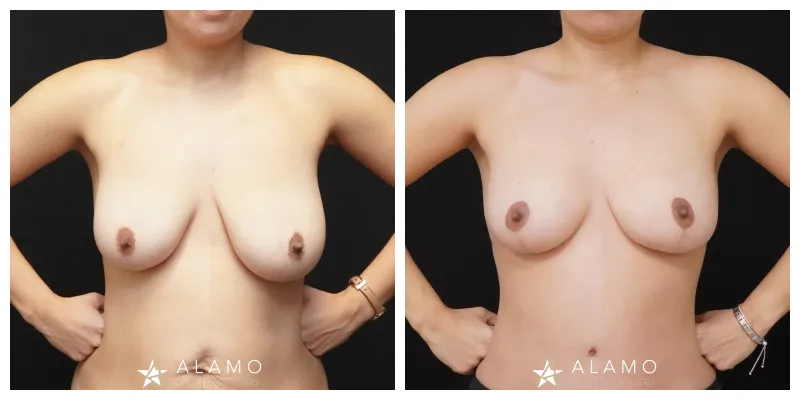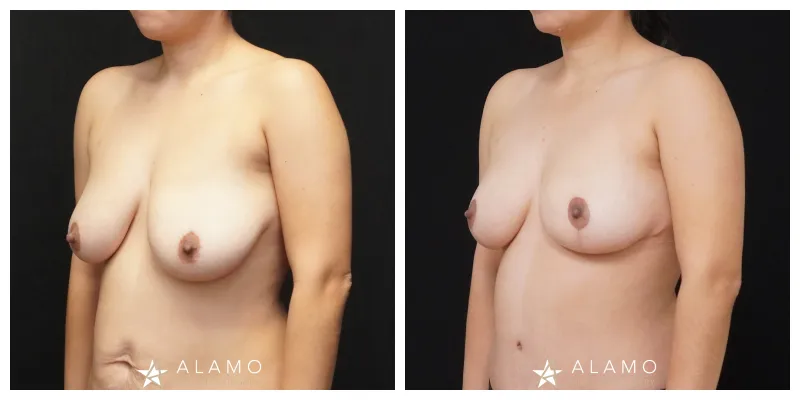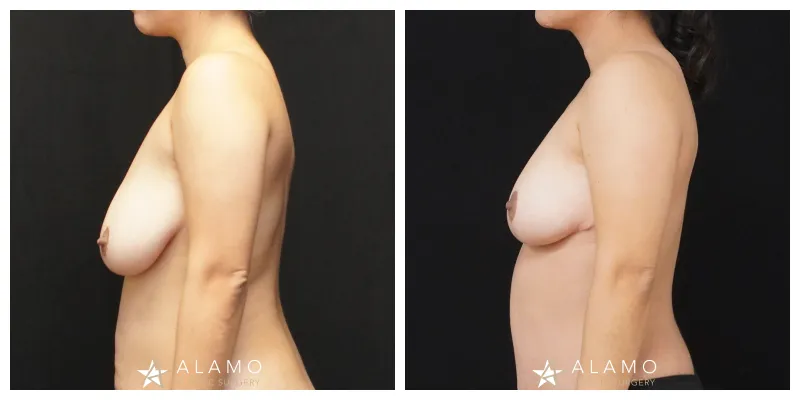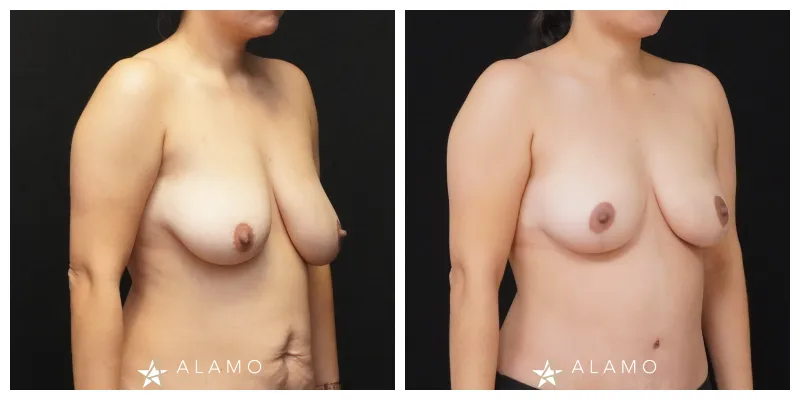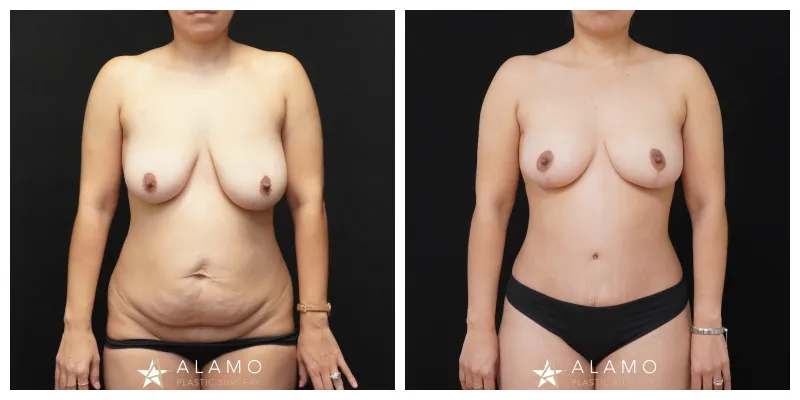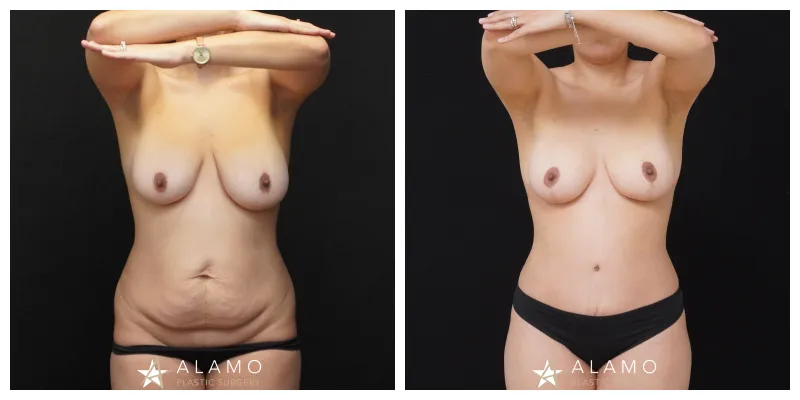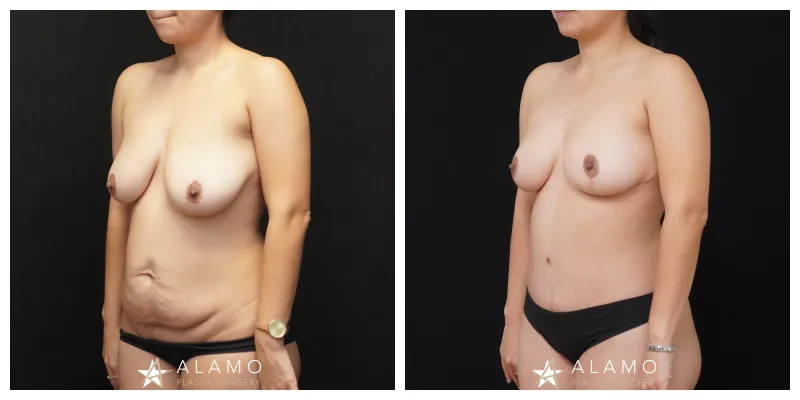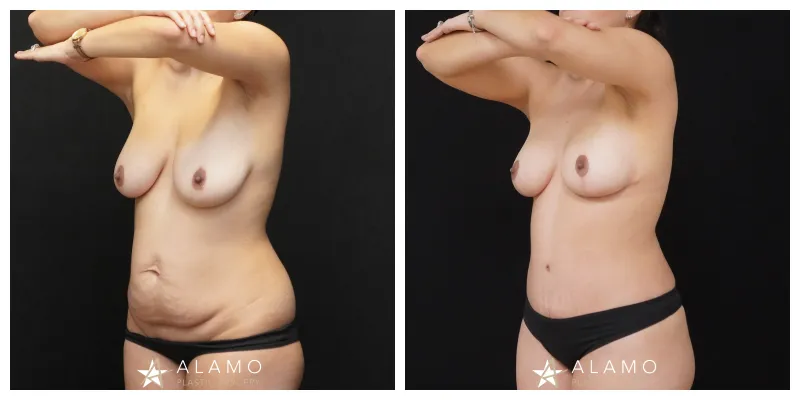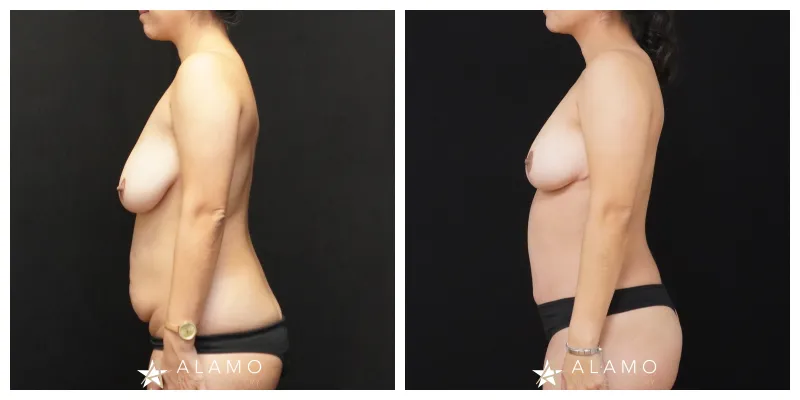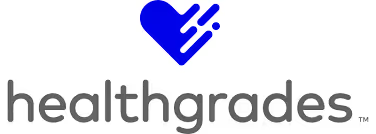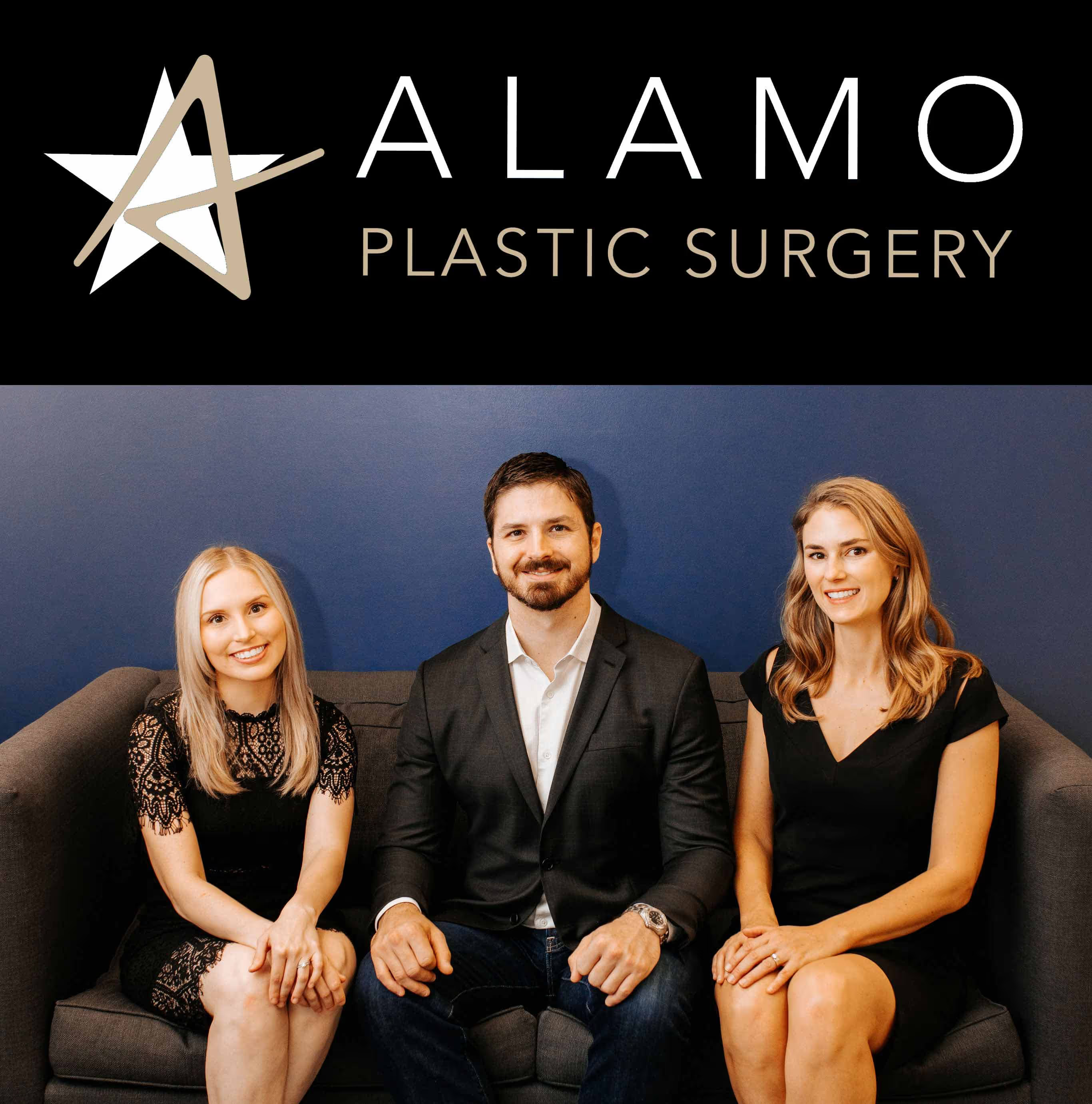Photo Gallery

This 38-year-old female wanted to restore her body after children. She had a staged procedure with a full abdominoplasty, muscle repair, and liposuction and then breast augmentation (345 cc Soft Touch implants with internal bra) with breast lift (shown 5 months out for breast and 16.5 months for belly).
This 42-year-old female wanted to restore her body after having a children. She underwent an abdominoplasty, muscle repair, and liposuction (shown 5 months out).
This 32-year-old female wanted to restore her body after children. She underwent breast augmentation with 385 cc Soft Touch implants through a dual plane breast fold incision and a full abdominoplasty with liposuction (shown 3 months out).
This 26-year-old female wanted to increase the size of her breasts and still have a natural result. She underwent breast augmentation using 350cc(left) and 380 cc (right) Mentor Xtra implants through a submuscular breast fold incision (shown at 5 months).
This 40-year-old female wanted to increase the size of her breasts. She underwent breast augmentation using 365cc soft touch implants through a retropectoral breast fold incision (shown 5.5 months out).
This 30-year-old female wanted to increase the size of her breasts and still have a natural result. She underwent breast augmentation using 295cc moderate profile soft touch implants through a dual plane breast fold incision (shown 5 months out).
This 24-year-old female wanted to add volume to her breasts. She underwent a breast augmentation with 415 cc Soft Touch implants through a dual plane breast fold incision (shown 4.5 months out).
As a BeachBody instructor, this 30 year old wanted more fullness in her sportswear. Here 2 months after subglandular breast augmentation SCF 335cc, she is as confident as ever in front of her fitness classes!
This 44-year-old female wanted to restore her body after children. She underwent full abdominoplasty, muscle repair, and breast augmentation (shown 6 months out).
This 24-year-old female wanted to increase the size of her breast. She underwent breast augmentation using 305cc soft touch implants through a retropectoral breast fold incision (shown 4 months out).
This 38-year-old female wanted to restore her body after having a children. She underwent an abdominoplasty, muscle repair, liposuction, and filling the hip dips (shown 5.5 months out).
This 40-year-old female wanted to add volume to her breasts. She underwent a breast augmentation with 415 cc Soft Touch implants through a dual plane breast fold incision (shown 4 months out).
This 36-year-old female wanted to revise a tummy tuck by another surgeon. She underwent revision abdominoplasty, muscle repair, and liposuction (shown 5.5 months out).
This 25-year-old female wanted to add volume to her breasts. She underwent a breast augmentation with 365 cc Soft Touch implants through a dual plane breast fold incision (shown 5 months out).
This 68-year-old female was unhappy with the asymmetry and volume of her breast after breast augmentation with another surgeon. She underwent breast implant revision with replacement of implants to 450 cc soft touch through dual plane breast fold with internal bra (shown 5 months out).
This 29-year-old female wanted to add volume to her breasts. She underwent a breast augmentation with 415 cc Soft Touch implants through a total sub-muscular breast fold incision (shown 4.5 months out).
This 34-year-old female wanted to increase the size of her breasts and decrease the size of her nipple and still have a natural result. She underwent breast augmentation and nipple reduction using 325cc soft touch implants through a total submuscular breast fold incision (shown 5.5 months out).
This 52-year-old female wanted to restore her body after children. She underwent full abdominoplasty, muscle repair, and breast lift (shown 5.5 months out).
This 48-year-old female wanted to restore her body after children. She had a full abdominoplasty, muscle repair, and liposuction and breast lift (shown 5 months out)
This 24-year-old female was unhappy with her breasts after significant weight loss. She had a breast augmentation with lift with 445 cc implants (shown 5 months out)
This 40-year-old female was unhappy with her breast shape and volume. She underwent a breast lift with augmentation (dual plane with 415 cc implants shown 6 months out).
This 38-year-old female wanted to restore her body after children. She underwent breast lift and a full abdominoplasty with liposuction (shown 7 months out).
This 29-year-old female was unhappy with her breast shape and volume. She underwent a breast lift with augmentation (405 cc implants shown 6 months out).
This 36-year-old female wanted to restore her body after children and losing 70 pounds. She had a full abdominoplasty, muscle repair, and liposuction and breast lift (shown 7 months out)
This 51-year-old female was unhappy with her breast shape and size. She had a full mastopexy / reduction (shown 5 months out).
This 29-year-old female wanted to increase the size of her breasts. She underwent breast augmentation using 275cc soft touch implants through a dual plane breast fold incision (shown 5.5 months out).
This 20-year-old female was unhappy with her breast shape. She had a breast lift (shown 4 months out)
This 43-year-old female wanted to restore her body after children and massive weight loss. She had a full abdominoplasty, muscle repair, and liposuction and breast lift (shown 5 months out)
This 41-year-old female wanted to restore her body after losing 70 pounds. She underwent an abdominoplasty, muscle repair, and liposuction (shown 5 months out)
This 37-year-old female wanted to restore her body after children. She underwent full abdominoplasty, muscle repair, and breast augmentation (shown 6 months out).
This 29-year-old female was unhappy with the size and shape of her breasts. She underwent breast augmentation using 290cc soft touch implants through a subglandular breast fold incision (shown 8 months out).
This 39-year-old female wanted to restore her body after children. She underwent full abdominoplasty, muscle repair, abdomen Liposuction and breast lift (shown 7.5 months out).
This 24-year-old female wanted to add volume to her breasts. She underwent a breast augmentation with 415 cc Soft Touch implants through a dual plane breast fold incision (shown 4.5 months out).
This 29-year-old female wanted to restore her body after children. She underwent breast augmentation with a lift using 415 cc soft touch implants through a total submuscular breast fold incision and a full abdominoplasty with muscle repair (shown 5 months out).
This 51-year-old female was unhappy with her breast shape and size. She had a full mastopexy / reduction (shown 5 months out).
This 26-year-old female wanted to change her breast shape after having children. She underwent a full breast lift with 415 cc responsive implants through a total submuscular breast fold incision (shown 5 months out).
This 40-year-old female wanted to restore her body after having children. She underwent an abdominoplasty, muscle repair, and liposuction (shown 5 months out).
This 37-year-old female wanted to change her breast shape after having children. She underwent a full breast lift (shown 5 months out).
This 38-year-old female wanted to restore her body after having a children. She underwent a breast lift, abdominoplasty, muscle repair, and liposuction (shown 6 months out).
This 37-year-old mother of 7 children wanted to add volume to her breasts. She underwent a breast augmentation with 345 cc Soft Touch implants thru a dual plane breast fold incision (shown 5 months out).
At 44 years old, this patient knew it was time to do something about her huge boobs. She was concerned about her ability to have a breast reduction with her autoimmune disorder. 4 months after a breast reduction with an inferior pedicle, her daughter can't believe her mom's results!
This 38-year-old female wanted to restore her body after children. She underwent breast lift and full abdominoplasty with muscle repair (shown 5 months out).
This 18 years old wanted to start her college years off with more 'normal' breasts. She was tired of the stares, and felt uncomfortable wearing normal clothes. One year after breast reduction inferior pedicle and after her freshman year, she is walking upright, chest-out, in whatever clothes she wants, and has dramatically improved confidence!
This 22 year old was noticing that her large breasts were starting to sag! She had always had large breasts, and was ready to get smaller, lighter and perkier breasts. Seen here 1 year after her breast reduction, she reports that it has changed her life!
This 40-year-old female was unhappy with her breast shape, add volume to her breasts, and correct asymmetry. She underwent a breast augmentation with breast lift with 415 cc Soft Touch implants through a total sub-muscular breast fold incision with an internal bra (shown 6 months out).
This 44-year-old female wanted to restore her body after children. She underwent full abdominoplasty, muscle repair, and breast augmentation (shown 6 months out).
As a small business owner, this 40 year old patient needed to improve her mobility but did not want much down time. 1 year after her breast reduction, she not only has improved mobility, but also has improved sensuality. 100% satisfied patient!
This 28-year-old female wanted to add volume to her breast. She underwent a breast augmentation with 295 cc Natrelle implants through a dual plane breast fold incision (shown 4 months out).
This 26-year-old female wanted to add volume to her breasts. She underwent a breast augmentation with 385 cc Soft Touch implants through a dual plane breast fold incision (shown 4 months out).
This 44-year-old female was unhappy with her breast asymmetry and nipple position. She underwent a breast reduction (shown 4 months out)
This 20-year-old female wanted to add volume to her breasts. She underwent a breast augmentation with 400 cc saline implants through a total submuscular breast fold incision (shown 5.5 months out).
This 29-year-old female wanted to add volume to her breasts. She underwent a breast augmentation with 365 cc Soft Touch implants through a dual plane breast fold incision (shown 5 months out).
This 32-year-old female wanted to restore her body after having children. She underwent an abdominoplasty, muscle repair, and liposuction (shown 5 months out).
This 37-year-old female wanted to improve the shape of her breasts. She underwent a total submuscular breast augmentation with lift with a 340 cc left and 275 cc right implant - (shown 1 months out).
This 45-year-old female wanted to add volume to her breasts. She underwent a breast augmentation with 365 cc Soft Touch implants through a dual plane breast fold incision (shown 4.5 months out).
For 30 years old, this patient knew exactly the look she wanted: superior pole fullness and cleavage. One month after dual plane 2 subpectoral Allergan Inspira smooth round full profile SRF 335c silicone implants, and she enjoys finding clothes that highlight her cleavage!
This 39-year-old female wanted to add volume to her breast. She underwent a breast augmentation with 445 cc Natrelle implants through a total submuscular breast fold incision (shown 5 months out).
This 50-year-old female wanted to reduce the volume and lift her breasts. She underwent a breast reduction (shown 4.5 months out).
This 41-year-old female wanted to add volume to her breasts. She underwent a breast augmentation with 365 cc Soft Touch implants through a dual plane breast fold incision with internal bra (shown months out).
This 32-year-old female wanted to increase the size of her breasts. She underwent breast augmentation using a 355cc Mentor implants in a total submuscular pocket through breast fold incision (shown 6 months out).
This 32-year-old female wanted to restore her body after having children. She underwent an abdominoplasty, muscle repair, and liposuction (shown 5 months out).
This 26-year-old female wanted to add volume to her breasts and improve breast asymmetry. She underwent a breast augmentation with left breast wedge excision with 415 cc Soft Touch implants through a total sub-muscular breast fold incision (shown 5 months out).
This 39-year-old female wanted to restore her body after children. She underwent full abdominoplasty, muscle repair, and breast lift (shown 5.5 months out).
This 47-year-old female wanted to restore her body after major weight loss. She underwent a breast augmentation (dual plane 360 cc soft touch implants), abdominoplasty, and liposuction (shown 3 months out).
This 27 year old wanted her breasts to be more proportionate to her body. Now 4 months after subglandular breast augmentation SCF 345cc she is finding reasons to wear a sports bra or bikini top!
This 37-year-old female wanted to restore her body after four children. She underwent breast lift with implants (365 cc Soft Touch), full abdominoplasty, muscle repair, and liposuction (shown 4 months out).
This 32-year-old female wanted to increase the size of her breasts and still have a natural result. She underwent breast augmentation using a 405cc on the right and 440cc Mentor xtra profile implants through a submuscular breast fold incision (shown 4 months out).
This 47-year-old female wanted to restore her body after major weight loss. She underwent a breast augmentation (dual plane 360 cc soft touch implants), abdominoplasty, and liposuction (shown 3 months out).
This 28-year-old female wanted to add volume to her breast and correct a slight asymmetry. She underwent a breast augmentation with 450 cc Natrelle implants through a dual plane breast fold incision (shown 4 months out).
At only 18 years old, this patient had trouble going to the pool and the gym without drawing stares. Her neck and shoulders were constantly hurting. 1 year after a breast reduction with inferior pedicle (no free nipple graft), she has better mobility, renewed confidence, and draws stares for all the right reasons!
This 29-year-old female wanted to restore her body after children. She underwent breast augmentation with a lift using 415 cc soft touch implants through a total submuscular breast fold incision and a full abdominoplasty with muscle repair (shown 5 months out).
This 33-year-old female wanted to add volume to her breast. She underwent a breast augmentation with a Mentor implants. 330 cc on the left and a 310 cc right side through a total submuscular breast fold incision (shown 3 months out).
This 42 year old needed something to kickstart her self improvement goals. She wanted to start with lifting and slightly decreasing the volume of her droopy breasts. 4 months after breast lift with autoaugmentation flap, she says it is “the best thing she has ever done for herself” She is now recommitted to continuing her self improvement journey.
After a major disruption in her private life, this 38 year old needed a positive change and wanted a boost in her self-confidence. 4 months after total submuscular breast augmentation with silicone implants, Right SCM 310cc, Left SCM 295cc. Mission accomplished!
This 47-year-old female wanted to restore her body after major weight loss. She underwent a breast augmentation (dual plane 360 cc soft touch implants), abdominoplasty, and liposuction (shown 3 months out).
As a mother of twins, this 30 year old was bothered by her breast loss and her sunken in breast bone (pectus excavatum). She also wanted to be ready for a big trip to Vegas with her husband. After her dual plane augmentation surgery (SSF345cc), she was thrilled to go buy new bras and swimsuits for her trip!
This 42-year-old female wanted to add volume to her breasts. She underwent a breast augmentation with 385 cc Soft Touch implants through a dual plane breast fold incision (shown 6 months out).
This 38-year-old female wanted to restore her body after having four children. She underwent a breast augmentation (365 cc left and 385 cc right soft touch), abdominoplasty, muscle and liposuction (shown 5.5 months out).
This 25-year-old female wanted to add volume to her breasts and make them more symmetrical (left lower than right). She underwent a breast augmentation with 365 cc left and 415 cc right Soft Touch implants through a dual plane breast fold incision (shown 5 months out).
This 29-year-old female wanted to add volume to her breasts. She underwent a breast augmentation with 365 cc Soft Touch implants through a dual plane breast fold incision (shown 4.5 months out).
This 38-year-old female was unhappy with her breast shape and nipple position from another surgeon . She underwent a breast lift with augmentation (total submuscular with 350 cc implants) and a free nipple graft (shown 5 months out)
This 35-year-old female was unhappy with her breast shape and nipple position, but she wanted to keep her breast volume. She underwent a breast reduction with liposuction (shown 5.5 months out)
This 23-year-old female wanted to increase the size of her breasts and still have a natural result. She underwent breast augmentation using 415cc on the left and 385 cc on the right soft touch implants through a dual plane breast fold incision (shown 4 months out).
This 28-year-old female wanted to add volume to her breasts and improve a slight asymmetry. She underwent a breast augmentation with 295 cc Soft Touch implants through a dual plane breast fold incision with an internal bra (shown 5 months out).
This 36-year-old female was unhappy with her breast shape and wanted to add volume to her breasts. She underwent a breast augmentation with breast lift with 445 cc Soft Touch implants through a dual plane breast fold incision with an internal bra (shown 5 months out).
This 38-year-old female wanted to restore her body after children. She had a staged procedure with a full abdominoplasty, muscle repair, and liposuction and then breast augmentation (345 cc Soft Touch implants with internal bra) with breast lift (shown 5 months out for breast and 16.5 months for belly).
This 43-year-old female wanted to restore her body after children and massive weight loss. She had a full abdominoplasty, muscle repair, and liposuction and breast lift (shown 5 months out)
This 20-year-old female was unhappy with her breast shape. She had a breast lift (shown 4 months out)
This 25-year-old female wanted to add volume to her breasts. She underwent a breast augmentation with 340 cc Soft Touch implants through a total submuscular breast fold incision (shown 3.5 months out).
This 34-year-old female was unhappy with the volume and asymmetry of the breasts. She underwent breast augmentation using 450cc on the left and 415 cc on the right soft touch implants through a sub-glandular breast fold incision. On her right breast she also had a full mastopexy (shown 6 months out).
This 44-year-old female was unhappy with her breast shape and volume. She underwent a breast lift with augmentation (dual plane with 365 cc implants shown 5 months out).
This 58-year-old female wanted to restore her body after weight loss. She underwent FDL abdominoplasty, muscle repair, and liposuction (shown 7.5 months out).
This 38-year-old female wanted to reduce the volume of her breasts. She underwent a breast reduction (shown 6 months out).
This 38-year-old female wanted to restore her body after having a children. She underwent a breast lift, abdominoplasty, muscle repair, and liposuction (shown 6 months out).
This 52-year-old female wanted to restore her body after children. She underwent full abdominoplasty, muscle repair, and breast lift (shown 5.5 months out).
This 43-year-old female wanted to restore her body after children. She had a full abdominoplasty, muscle repair, and liposuction and breast lift (shown 5 months out)
This 50-year-old female wanted to restore her breasts after children. She underwent breast lift (shown 5 months out).
This 44-year-old female was unhappy with her breast asymmetry and nipple position. She underwent a breast reduction (shown 4 months out)
This 32-year-old female wanted to restore her body after children. She underwent breast augmentation with 385 cc Soft Touch implants through a dual plane breast fold incision and a full abdominoplasty with liposuction (shown 3 months out).
This 52-year-old female wanted to restore her body after children. She underwent full abdominoplasty with muscle repair and liposuction (shown 8 months out).

Exceptional. Compassionate. Trusted.
Get In Touch
We will contact you shortly!























